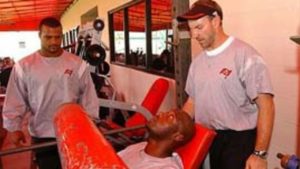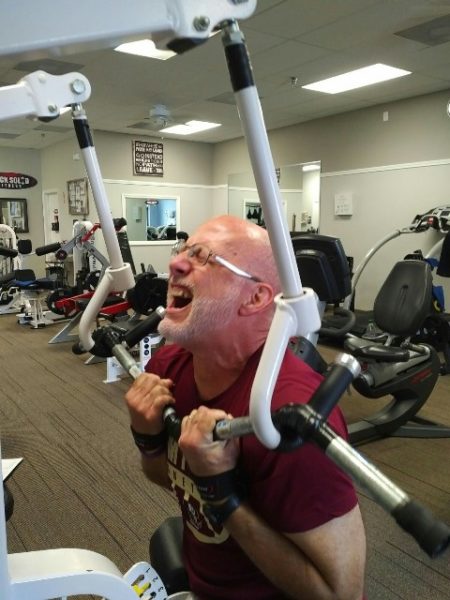I remember one day back in 2001, during summer strength training workouts in the Tampa Bay Buccaneers weight room, watching Head Strength Coach Mark Asanovich training one of our offensive linemen.

We had been made aware, by the athletic training staff, that this lineman had strained his right shoulder in the last game; he was cleared to lift, as long as nothing he did increased his shoulder pain.
While doing a trap exercise, the lineman grimaced as performed a repetition. He was obviously in pain. In between reps, Mark asked him if his shoulder was hurting; he admitted that it was.
Pro football players are trained to “play through pain”, and the great ones that I have met possess incredible mental toughness.
This lineman was no exception. He proceeded to attempt another rep, which brought the grimace back to his face.
“STOP!” Mark said. The player complied.
The teachable moment
Then came the teachable moment-Mark told the player:
“Move on to the next exercise. This stuff is supposed to help you, not hurt you”.
Of course that goes for us over-50 guys too. When designing and performing our own strength training workouts, we definitely need to keep this important concept in the front of our minds.
Sometimes the teachable moment is available only in retrospect, after something bad has already happened. Now you not only have to deal with the pain of a new injury, but also the pain of looking back on the situation and knowing you could have avoided it. Super frustrating!
How to make your strength training workouts helpful, not harmful
Your strength training workouts should not be dangerous if a few simple guidelines are followed, such as:
- Controlled rep speed: On every rep of every set, your goal is to move the weight through the force of muscular contraction alone. You don’t want any outside forces, like momentum, moving the weight for you. Lift the weight to the finish position in about 2 seconds without using momentum. Lower the weight in about 4 seconds.
- Proper form: Begin each repetition slowly and smoothly; no fast or explosive starts, just gradually increase the force you’re exerting until the weight moves, then keep it moving. Lift the weight under full muscular control, change direction smoothly, without any rebound or slamming the weight stack, and keep constant tension on the working muscles. This will not only make the exercise safer, but also more productive by increasing the intensity.
- A safe training environment: Make sure you can exit the exercise safely at any time. On any exercise where you will be under the weight, make sure there is some barrier to catch the weight to prevent you from getting stuck under it. (Don’t be the next guy in a YouTube video getting trapped under the weight while bench pressing).
- Selecting orthopedically friendly exercises: Select exercises for your strength training workouts that do not put undo strain on your joints, bones or connective tissues. Examples include dumbbell or machine shoulder presses using a parallel grip, instead of behind-the-neck shoulder presses; close-grip, underhand pulldowns and chin-ups vs. the behind-the-neck variety; 1 arm dumbbell rows, cable rows or machine rows in place of bent-over barbell rows; and leg presses vs. squats.
The takeaway
In the end, everyone over 50 needs to think safety first when creating and implementing their own strength training workouts.
Carefully consider your exercises choices-not only in terms of productivity, but also potential long-term adverse effects. Perform your reps in a slow, controlled fashion. Take steps before you start to make sure you aren’t going to get stuck in or under anything.
Don’t put yourself in harm’s way unnecessarily. Just like that Buccaneer lineman, you’ve got a lot of seasons left in your body. Design your strength training workouts with your end goal in mind – a long, active, healthy life.
Let’s make our remaining “seasons” our best!

